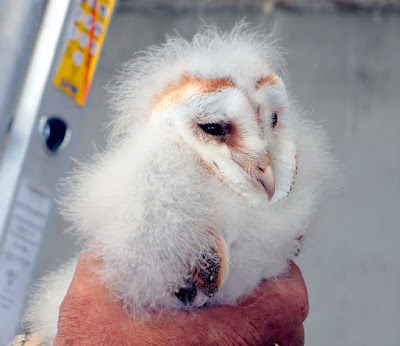We were back at Oakenclough again this morning for another ringing session, hoping to catch more Blackcaps and other warblers.
Here's news of the Blackcap caught here on 24th July, an adult female that bore the BTO ring ACE2152.
Finer details arrived quite quickly with the information that the Blackcap had been ringed on 15 September 2018 at Five Houses, Calbourne, Isle of Wight, UK. At that time the ringers, the Isle of Wight Ringing Group, aged the bird as a first autumn female.
Both the date and location suggest the Blackcap was on its way to France, Spain or perhaps North Africa to spend the winter. The following summer of 2019 saw the Blackcap somewhere in the north of the UK before we recaptured it on July 24.
Both the date and location suggest the Blackcap was on its way to France, Spain or perhaps North Africa to spend the winter. The following summer of 2019 saw the Blackcap somewhere in the north of the UK before we recaptured it on July 24.
This morning at 0600 the sky was overcast and threatened rain but at least there was zero wind and it later stayed dry but with mostly poor light and visibility in all directions.
The morning proved quite successful by way of 35 new birds of 11 species. It was unusual for us that the most caught species was Blue Tit, a bird that doesn’t feature much on our field sheets. Bird feeders at a nearby dwelling usually keep the tit family from our nets. We noted on our last visit that the feeders were empty, a fact which may have inspired the tits to seek food further afield and into our ringing area.
The catch of another batch of migrant warblers (Blackcap plus both Garden and Willow Warblers) came as compensation for sedentary titmice.
No recaptures amongst 9 Blue Tit 9, 8 Willow Warbler 8, 3 Goldcrest, 3 Blackcap, 2 Garden Warbler, 2 Great Tit, 2 Dunnock, 2 Wren, 2 Lesser Redpoll, 1 Chaffinch and 1 Chiffchaff.
We caught our first Lesser Redpoll of the autumn, two streaky brown juveniles of an age that cannot be sexed until there is more colour in the feathers.
Of the thirty five birds caught this morning, there was but one adult, a Willow Warbler, the rest birds of the year. Our catches and observations this summer and early autumn do suggest a productive breeding season.
Stay tuned. If the weather holds it’s another 0600 start for Thursday.
Linking today to World Bird Wednesday.
The catch of another batch of migrant warblers (Blackcap plus both Garden and Willow Warblers) came as compensation for sedentary titmice.
No recaptures amongst 9 Blue Tit 9, 8 Willow Warbler 8, 3 Goldcrest, 3 Blackcap, 2 Garden Warbler, 2 Great Tit, 2 Dunnock, 2 Wren, 2 Lesser Redpoll, 1 Chaffinch and 1 Chiffchaff.
Garden Warbler
Willow Warbler
Chiffchaff
We caught our first Lesser Redpoll of the autumn, two streaky brown juveniles of an age that cannot be sexed until there is more colour in the feathers.
Of the thirty five birds caught this morning, there was but one adult, a Willow Warbler, the rest birds of the year. Our catches and observations this summer and early autumn do suggest a productive breeding season.
Lesser Redpoll
Stay tuned. If the weather holds it’s another 0600 start for Thursday.
Linking today to World Bird Wednesday.
































































.jpeg)



.jpg)












